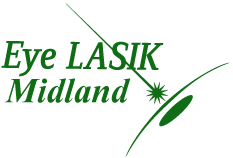Glaucoma is a fairly prevalent disease, affecting about two percent of the general population in the United States alone. It is actually the second leading cause of total blindness in the world. Glaucoma is known as the “silent thief” because it generally has no symptoms, and the disease is typically only noticed by the patient after extreme loss of peripheral vision has occurred.
What is Glaucoma?
Glaucoma is caused by an increase in pressure in the eye that causes damage to the optic nerve, the part of the eye that sends images received by the eye to the brain. This damage results in the gradual loss of peripheral vision that gets progressively worse and can lead to permanent blindness.
Glaucoma is usually diagnosed after a series of tests that include checking the pressure in the eye, looking at the optic nerve and checking for loss of peripheral vision. Once the disease has been diagnosed, treatment typically involves a regimen of eye drops to keep the pressure in the eye in a normal range. However, surgery can be an option if the drops do not control the pressure enough to prevent damage to the optic nerve.
But even if you’ve been diagnosed with glaucoma you can have laser eye surgery. Depending on the severity of your glaucoma, you may not be a candidate for traditional LASIK, but you may be able to have iLASIK with glaucoma.
iLASIK with Glaucoma
During the LASIK procedure, a hinged flap is made in the cornea (the clear part of the eye located in front of the iris) ,and then a laser is used to remove excess tissue in the corneal bed to refocus light and alleviate the patient’s need for glasses or contacts.
During a traditional LASIK procedure, a device called a microkeratome is used to cut the flap in the cornea. This part of the procedure can cause an increase in the pressure of the eye because the microkeratome uses suction to ensure the eye does not move while the flap is cut. This can exacerbate glaucoma in those patients with the condition, and in some cases, the pressure may go up even after the procedure has been completed.
However, iLASIK, also known as Intralase LASIK, alleviates this risk since the flap is created using a femtosecond laser. No pressure is placed on the eye to make the flap, and the procedure is completely bladeless. Instead during iLASIK with glaucoma, the femtosecond laser applies tiny rapid pulses of light to the eye causing microscopic bubbles to form just below the surface of the cornea.
The Intralase method takes about 15 seconds and makes having iLASIK with glaucoma safer for you. Having iLASIK with glaucoma also offers excellent results. Vision is typically clearer right after the procedure, and there is less trauma to the eye. The result is less inflammation after iLASIK with glaucoma along with a reduction in healing time.
For patients who thought they were unable to have laser eye surgery, iLASIK with glaucoma is a real possibility. For most patients, having iLASIK with glaucoma is a safe alternative to traditional LASIK.
Schedule a FREE evaluation to decide if laser vision correction surgery is for you. Read what happens at your evaluation in one of our past blogs here.
Want to receive more vision tips from Eye LASIK Midland? Register for our newsletter! Click HERE.
